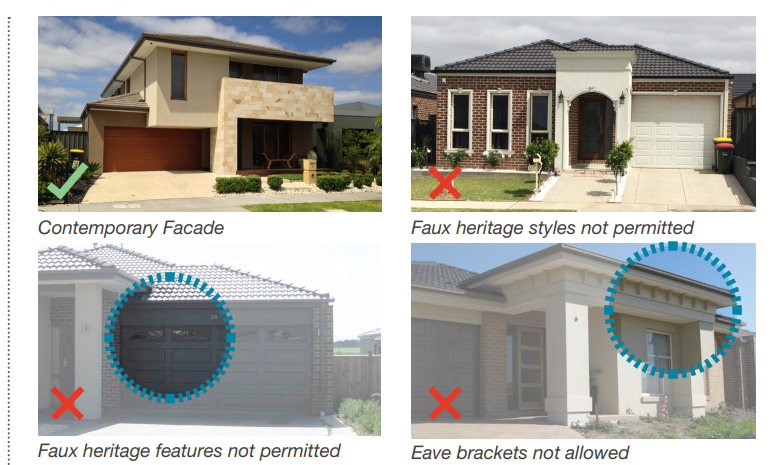When you consider purchasing a property off-the-plan land to build, more than often you are purchasing into an estate. Below are some of things you may consider when purchasing vacant land to build.
- Timeframe of the land titling / titled land: If you decide to build sooner, you may wish to consider purchasing land which has already titled (i.e. the plan of subdivisions has registered) or unregistered land which is due to title soon. Alternatively, if you wish to build or settle later as part of your investment strategy, you can choose land which is estimated to title at a later time.
Please note however that estimated registration time is always subject to change and may be brought forward or later than the initial estimated date provided.
It is important that you understand the contract that you sign and it reflects your intentions.
- Land size does not equal build size: Always speak with a builder or building surveyor regarding your building plans and confirm that the minimum land size you require prior to finalising the land you wish to purchase. Alternatively, you can seek legal advice on any planning approvals, building approvals and Building Regulations that may be required.
- Design Guidelines: Developers may include design guidelines in the Contract of Sale which requires you to build your home in accordance with the design guidelines. These design guidelines may include the colour or materials to be used for the build, the setbacks or situation of your home from the title boundaries, size of your garage, types of windows used, landscaping etc. Whilst this is the Developer’s effort to encourage visually appealing streetscapes and certainty about the standard of housing in the estate, this can also restrict the design of your build of your dream home.
We have set out an example below of how a developer may restrict the build style for the estate.

Tip: Ensure you review the Design Guidelines and provide a copy to your Builder to ensure it aligns with what you wish to build before signing the Contract of Sale.
- Memorandum of Common Provisions (MCP): MCPs contain provisions that affect and may restrict the way that you build or use your property and goes hand in hand with the design essentials. For example, it may include:
- Minimum street setbacks (including side, rear, garages);
- Number of dwellings to be constructed on the land;
- Minimum number of storeys you must build in your home;
- Location of your driveway.
- Construction timeframes post settlement: What are your contractual obligations with regards to construction of your property post settlement? Some developers require you to commence and complete construction within a certain period of time post settlement. For example, start your build within 12 months of settlement and complete your build within 24 months of settlement. You should seek legal advice on the consequences of a breach of an essential term of the Contract of sale.
- Re-sale Deed: If you wish to sell the land after settlement, you may be required to include a re-sale deed (including the design essentials) in your sale documents to bind the new Purchaser to the construction timeframes and design essentials. There may also be provisions in your Contract that restrict a re-sale. You should seek legal advice on the provisions of the Contract so that you understand your rights and obligations as your intentions for the property may change along the way.
- Finance: Speak to your broker or lender regarding the type of loan that suits your circumstances. Some lenders will not lend on vacant land or provide construction loans and so it is important that you have approval or pre-approval prior to signing a Contract or ensure that the Contract is conditional on obtaining finance.
- Location: You should always do your due diligence of the surrounds of the land prior to purchasing, such as proximity to powerlines and land fill etc. Some lenders will not approve the loans or provide Lenders Mortgage Insurance to a borrower, if the land is close to powerlines (dependent on the lender, but usually 50 metres).
- Build costs: Some other things you wish to consider which contributes to build costs are soil type, building on a slope/ terrain and the requirement of retaining walls, fencing costs, landscaping costs, site costs etc.
- Small Land Housing Code: The Small Land Housing Code may apply if your land size is less than 300 square metres. If the code applies, you and your builder will need to consider the code when designing the build of your home.
- Contract terms continue to have effect after settlement: Some terms in the Contract of Sale continue to have effect even after settlement. We have given you some examples above. You should ensure that you completely understand your rights and obligations under the Contract to ensure that you do not breach the terms of the Contract and also consider the consequences if you are in breach. We recommend you always seek legal advice prior to entering into a legal Contract.
If you are thinking of purchasing vacant land or land to build, we are able to assist you by reviewing the Contract of Sale and providing you with advice on the terms and conditions of the Contract of Sale and Vendors Statement. We can also assisting in reviewing and advising on your Building Contract or House and Land Package Contract.
Burke Lawyers' Property Team
Our Real estate lawyers have extensive experience in all areas of Property and Real Estate Law covering both residential and commercial property and property development.
For any of your legal or conveyancing requirements contact our Real Estate Lawyers on +61 3 9822 8588 or email HERE.






